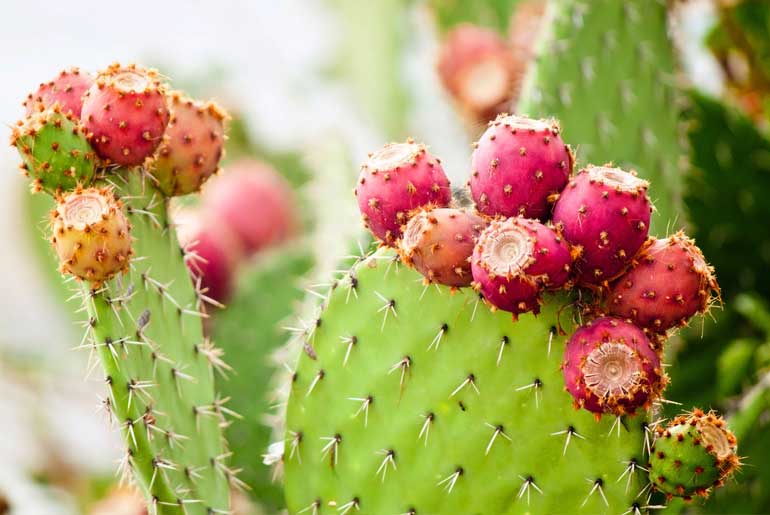The prickly pear cactus, characterized by its menacing needle-like spines, demands careful handling due to its protective features. However, its rewards are substantial: it offers juicy neon fruits and fleshy green pads that have been a source of nourishment for people for centuries.
Despite the intimidating spines, the prickly pear cactus features vibrant clusters of flowers in shades of yellow, red, and orange that bloom on top of its pads. These flowers eventually give way to oval fruits, which, like the pads, are rich in nutritional value including vitamin C, minerals, and fiber. Indigenous populations in the Southwestern U.S. and Latin America have long valued the prickly pear cactus for both its culinary and medicinal benefits. Referred to as “nopal” or “cacto” in Spanish, it was designated as the official state plant of Texas in 1995 and has been celebrated in festivals in Arizona, New Mexico, and California.
“Prickly pears are considered to have many health benefits,” stated Hope Wilson, a dietitian and nutritionist with the University of Arizona Cooperative Extension. “They’re low in sodium, low in fat and have zero cholesterol” – all of which can contribute to heart disease.
While the prickly pear cactus is native to the Americas, it has various varieties that grow worldwide, including in Australia. The plant’s attributes are promoted by individuals like Wilson, who educates people about food safety and nutrition in central Arizona. Wilson emphasizes that the fruit, known as “tuna” in Spanish, is more familiar to many people than the edible pads. The fruit is often compared in taste to watermelon and is transformed into jams, jellies, and cocktails. When consuming the fruit, it’s essential to remove the hairlike prickles, called glochids, before scooping out the flesh.
Although the drought-tolerant plant is native to the Americas, particularly in desert areas, different varieties grow throughout the world, including Australia. “I got a phone call from someone doing a documentary in Kenya and they said, ‘We found a prickly pear,'” Wilson stated.
Wilson encourages using prickly pear pads in culinary endeavors as well. After removing the spines, the pads can be grilled whole or diced, and then sautéed with other vegetables. The taste is described as a mixture of okra and green beans. For those who prefer not to handle the spines, Wilson suggests looking for pre-prepared prickly pear products in grocery stores, such as ready-to-eat tunas and nopales (cactus pads) but advises checking labels for added sugars or excessive sodium.
While it grows abundantly in the wild, the cactus plant can be cultivated. “Look for the tender ones,” she stated of the pads. “The spring is probably a good time for harvesting nopales to find the new and younger pads.”
Prickly pear is popularly used in jelly form, but it’s recommended to use it in moderation on desserts, snacks, or sandwiches due to its high sugar content. If making prickly pear juice at home, diluting the juice with water is advised to avoid potential stomach discomfort and nausea from consuming too much at once.
For those brave enough to handle the prickly pear cactus directly, using tongs is a recommended strategy to prevent a prickly encounter – a lesson learned by Wilson and others.
Disclaimer:
The information contained in this article is for educational and informational purposes only and is not intended as a health advice. We would ask you to consult a qualified professional or medical expert to gain additional knowledge before you choose to consume any product or perform any exercise.








